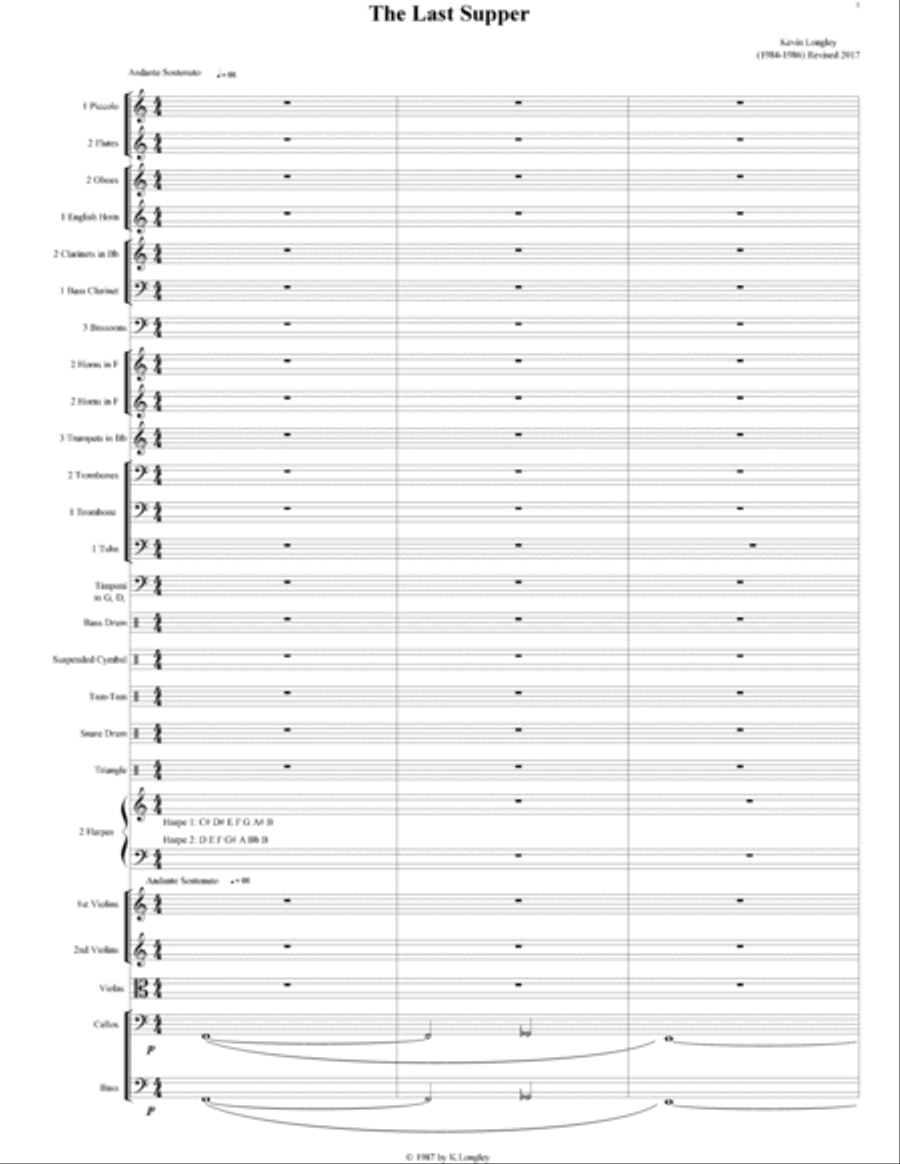Full Orchestra - Level 5 - Digital Download SKU: A0.1019350 Composed by Kevin Longley. Contemporary. Score and parts. 105 pages. Kevin Longley #3248395. Published by Kevin Longley (A0.1019350). The Last Supper, scored for Symphony Orchestra was conceived in 1984, completed in 1986 and later revised in 2017. The work is built around the idea of a visitor who is transported back in time to the events of the Last Supper. This visitor is only an observer to the event; having no effect upon what he sees. The piece opens with a dark theme, signifying the visitor walking through the shadowy streets of Jerusalem. As the theme comes to an end an oboe, high above, signals the visitors first view of the Last Supper. The music takes the listener from the Passover Meal to the Mount of Olives and finally to the Betrayal of Lord Jesus. Throughout the score are written biblical passages, meant to inspire the performer and give context to the music. They may optionally be spoken as part of the performance. Orchestra (1 piccolo, 2 flutes, 2 oboes, 1 english horn, 2 clarinets, 1 bass clarinet, 3 bassoons, 4 horns, 3 trumpets, 3 trombones, 1 tuba, timpani, bass drum, suspended cymbal, tam-tam, snare drum, triangle, harp, strings) Composed by Kevin Longley (1958-). Full score. 55 pages. Duration 15 minutes.
